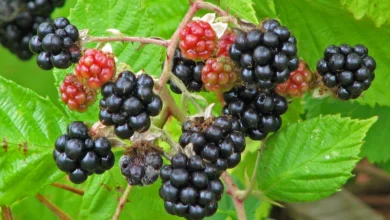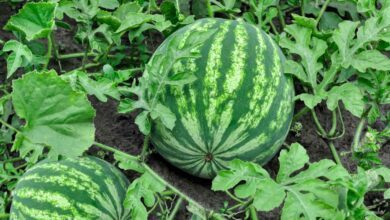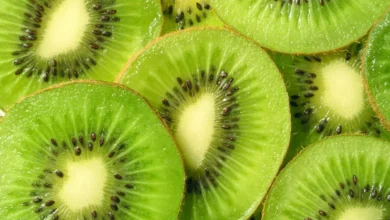How To Protect Fruit Trees From Frost And Freeze Damage

When it gets very cold, fruit trees can be harmed, especially their buds, flowers, and young fruit. If there’s a frost in the spring when the buds are open, you might lose all your fruit.
But don’t worry! There are steps you can take to keep your trees warm when it’s cold outside. Here are some helpful ways to protect your fruit trees from frost and freezing temps:
Table of Contents
- 1. Keep an Eye on the Weather and Get Ready
- 2. Choose the Best Place for Your Trees
- 3. Pick Trees That Don’t Mind the Cold
- 4. Cover Them Up
- 5. Warm Them Up
- 6. Water Them to Keep Them Warm
- 7. Don’t Prune Too Soon
- 8. Spray Them with Anti-Transpirants
- 9. Mulch at the Base
- 10. Paint Tree Trunks White
- Keep Trees Strong and Healthy
1. Keep an Eye on the Weather and Get Ready
Always watch the weather closely in the springtime. If you hear a frost might be coming, get ready to protect your trees. Have everything you need on hand so you can act quickly.
Remember, the weather can change a lot in the spring. Stay alert, especially after warm days, because cold nights can surprise the trees.
2. Choose the Best Place for Your Trees
Where you plant your trees can make a big difference. Avoid low spots where cold air gets trapped. Find a place with good air moving around and away from areas like concrete or bricks that get really cold. Places with grass or small plants are better because they keep the tree roots warm. Make sure there’s enough space between the trees for air to flow.
3. Pick Trees That Don’t Mind the Cold
Certain types of fruit trees are tougher and don’t get hurt by cold as much. Choose types that bloom later to miss the cold times. Apple and pear trees that can handle the cold are also a good pick.
Smaller trees like dwarfs can be more easily hurt by the cold, especially where the top part meets the root part. Look for trees that are joined together closer to the ground.
4. Cover Them Up
Wrapping trees with stuff like fabric covers or plastic can keep them warm. For little trees, you can use bags, boxes, buckets, or big tubs turned upside down over the tree.
Light cloth or plastic sheets that let the tree breathe are the best. Make sure they’re tied down so they won’t fly away, but don’t wrap so tight that it hurts the tree.
5. Warm Them Up
If you have lots of trees or very important ones, you might want to use heaters to keep them warm. There are special heaters for orchards that blow warm air but don’t burn the trees.
You can also use small heaters to keep each tree warm. Just be careful not to get them too hot. Turn on the heaters before it starts to freeze and keep them on until it warms up again.
6. Water Them to Keep Them Warm
Running water when it’s getting to freezing temps can actually help. The water turns to ice and protects the tree buds and flowers by keeping them a little warmer than the air.
Sprinklers and sprayers are good for covering the whole tree. Just remember to turn off the water when it gets warmer so the trees don’t get too dry.
7. Don’t Prune Too Soon
Even if you’re itching to prune when spring comes, wait until you know there will be no more frosts. Cutting the branches makes new, soft growth that can be easily damaged by cold.
When it’s safe, prune carefully. Leave some buds alone just in case there’s a late frost, then at least some fruit will survive.
8. Spray Them with Anti-Transpirants
Anti-transpirants are like special sprays that help the plant keep water in when it’s really cold. It’s like giving the trees a coat to wear against the frost.
Put the anti-transpirants on a few weeks before you think it might frost, and follow the instructions on the bottle. If it keeps being cold, put on more as needed. Spray the parts that are most likely to get hurt, like the buds, flowers, new shoots, and the graft spot.
9. Mulch at the Base
Putting a layer of mulch like bark, leaves, straw, or wood chips around the base of your trees helps keep them warm. Black plastic can also hold warmth from the sun and give it back at night.
Spread the mulch a few inches thick from the trunk to the ends of the branches. Putting it down in the fall can help all winter. Every year, add more mulch to keep protecting your trees.
10. Paint Tree Trunks White
Putting white paint on tree trunks reflects sunlight and keeps them warmer. Dilute white latex paint with water, half and half.
Paint from the ground to the first branches in late fall or early spring. Do the side where the sun sets, especially. Paint each year if you need to.
Keep Trees Strong and Healthy
Trees that are healthy handle the cold better. Take care of them all year with the right food, water, and care for any pests. Try not to give them too much fertilizer late in the year because it can make them too tender for the cold.
Stop giving them food by the middle of summer so they can toughen up for winter. Make sure they grow strong and steady. Trees that are well taken care of bounce back more quickly if they do get cold damage.
Keep an eye on the weather and get your trees ready in advance. It’s better to protect them too much than to risk your crop to a sudden cold snap. With good care, you can still pick lots of fruit even if spring is chilly.







